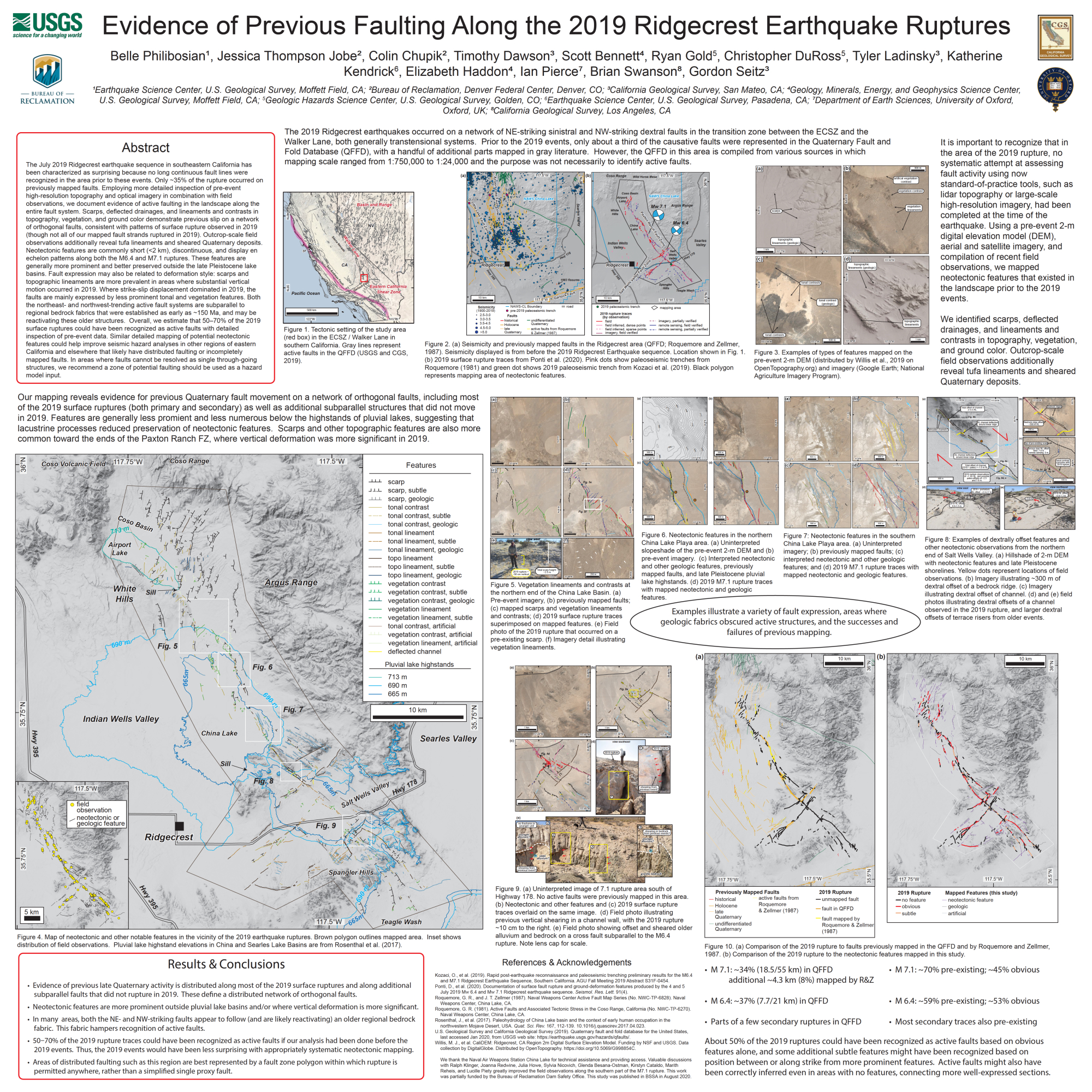Poster #020, Earthquake Geology
Evidence of previous faulting along the 2019 Ridgecrest earthquake ruptures
Poster Image:

Poster Presentation
2020 SCEC Annual Meeting, Poster #020, SCEC Contribution #10205 VIEW PDF
n a network of orthogonal faults, consistent with patterns of surface rupture observed in 2019 (although not all of our mapped fault strands ruptured in 2019). Outcrop-scale field observations additionally reveal tufa lineaments and sheared Quaternary deposits. Neotectonic features are commonly short (<2 km), discontinuous, and display left-stepping en echelon patterns along both the M6.4 and M7.1 ruptures. These features are generally more prominent and better preserved outside the late Pleistocene lake basins. Geomorphic expression of the faults may also be related to deformation style: scarps and topographic lineaments are more prevalent in areas where substantial vertical motion occurred in 2019. Where strike-slip displacement dominated in 2019, the faults are mainly expressed by less prominent tonal and vegetation features. Both the northeast- and northwest-trending active fault systems are subparallel to regional bedrock fabrics that were established as early as ~150 Ma and may be exploiting bedrock weaknesses along these older structures. Overall, given the variable prominence of neotectonic features, we estimate that 50–70% of the 2019 surface ruptures could have been recognized as active faults with detailed inspection of pre-event data. Our observations serve to motivate more detailed study in eastern California and beyond where future surface-rupturing earthquakes may occur on currently incompletely mapped faults and illustrate how mapping complex distributed fault systems from neotectonic features presents an ongoing challenge to fault characterization for seismic hazard assessments.
SHOW MORE
SHOW MORE




































